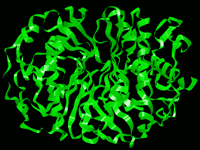
Finally, pdb-tools are also part of the SBGrid initiativeĬPython, using only modules of the standard library, which allows us to support a wide range of Python versions (2.7 and all of the 3.x series). In addition, to simplify the installation procedure for the end-user, the toolkit is also available for download through Python and are currently developed on GitHub under the open-source Apache License version 2.0. For developers, the coherent architecture simplifies maintenance and development of new tools.
FREE DOWNLOAD PDB CONVERTER SERIAL
Moreover, to support complex editing operations, we designed the toolkit to allow the serial concatenation of several tools in a pipeline without the need to read or write intermediary files. In order to shorten the learning curve for new users, all pdb-tools implement a unified command-line interface. Here, we present pdb-tools, a modular toolkit providing several everyday tasks when handling PDB files, namely downloading, editing, filtering, merging, sorting, and validation, as well as conversion to and from the more recent PDBx/mmCIF file formatįigure 1). The alternative is for researchers to become proficient in a programming language, such as Python, and use one of its structural bioinformatics libraries, such as BioPython Other edits, such as selecting atomic positions based on occupancy values, are even more challenging to accomplish in molecular viewers, if possible at all. More advanced edits, such as changing chain identifiers, deleting specific atoms, or renumbering residues require expertise with scripting languages, whose syntax varies from viewer to viewer. PyMOLĤ, to perform basic editing tasks, such as selecting chains from a structure. As a result, researchers use molecular viewers, e.g.

FREE DOWNLOAD PDB CONVERTER MANUAL
This strictness and complexity of the PDB format make manual editing difficult.

The PDB format encodes 44 possible different record types in a human-readable flat-text format, with each record having a number of fields with stringent spacing rules in a total of 80 characters. Of the many file formats used in structural biology to store three-dimensional coordinate data, the Protein Data Bank (PDB) format remains one of the most widely adopted, despite the introduction of a new standard - the mmCIF format - in recent yearsĢ. Obtaining and analyzing three-dimensional structures of biological macromolecules, such as proteins or nucleic acids, is often a key step towards understanding their biological function.


 0 kommentar(er)
0 kommentar(er)
